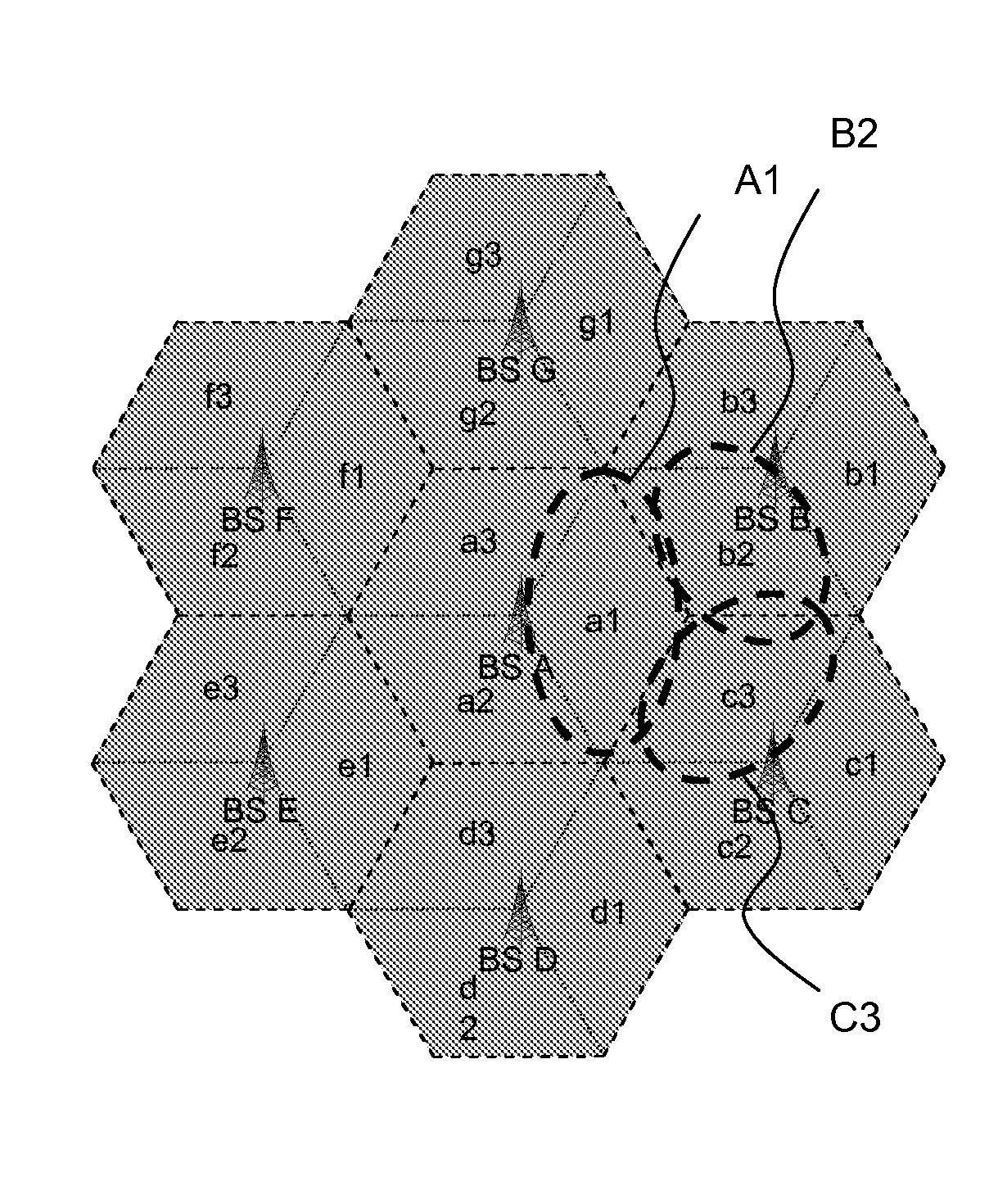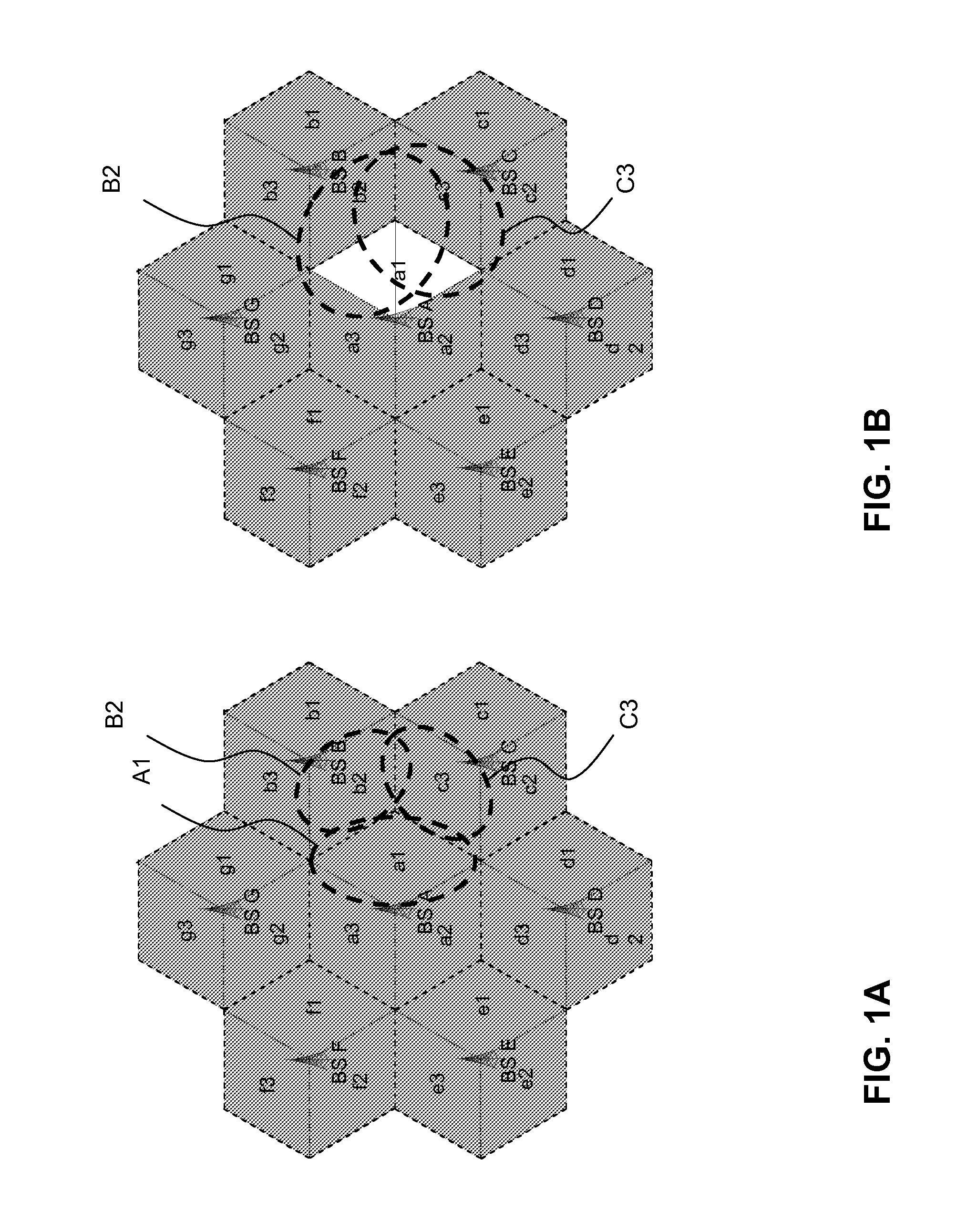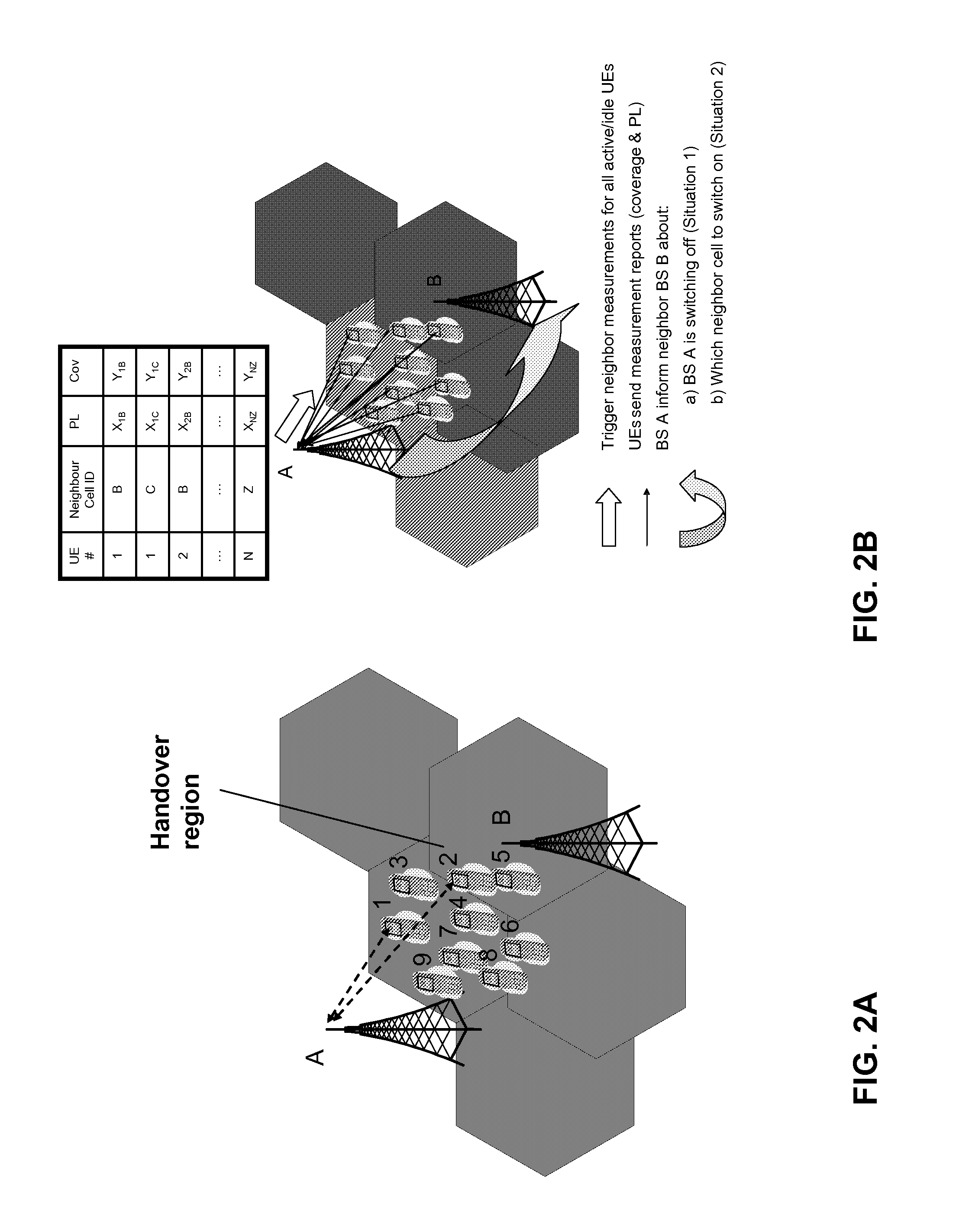Method and Telecommunications Network for Deactivating or Activating a Cell in Such a Network
- Summary
- Abstract
- Description
- Claims
- Application Information
AI Technical Summary
Benefits of technology
Problems solved by technology
Method used
Image
Examples
Example
DETAILED DESCRIPTION OF THE DRAWINGS
[0041]FIG. 1A is a schematic illustration of base stations BS A-BS G providing a plurality of active cells. Each base station location comprises three sectors, thus covering an area around the base station location. For example, cell A1 of base station location BS A serves its best server area marked ‘a1’. Similarly, cells A2 and A3 (not shown) of the same base station location BS A serve their best server area marked ‘a2’ and ‘a3’ respectively. A same set-up is shown for the other base station locations BS B to BS G. In FIG. 1A, the regular pattern of base stations and sectors leads to the commonly known hexagonal of coverage areas.
[0042]At some point in time, cell A1 of base station BS A may experience a low load of active user devices. In such a situation, it may be profitable for energy consumption reduction or other reasons to deactivate, e.g. to completely switch off, cell A1 or even all cells A1-A3 at this base station (illustrated by the w...
PUM
 Login to View More
Login to View More Abstract
Description
Claims
Application Information
 Login to View More
Login to View More - R&D
- Intellectual Property
- Life Sciences
- Materials
- Tech Scout
- Unparalleled Data Quality
- Higher Quality Content
- 60% Fewer Hallucinations
Browse by: Latest US Patents, China's latest patents, Technical Efficacy Thesaurus, Application Domain, Technology Topic, Popular Technical Reports.
© 2025 PatSnap. All rights reserved.Legal|Privacy policy|Modern Slavery Act Transparency Statement|Sitemap|About US| Contact US: help@patsnap.com



